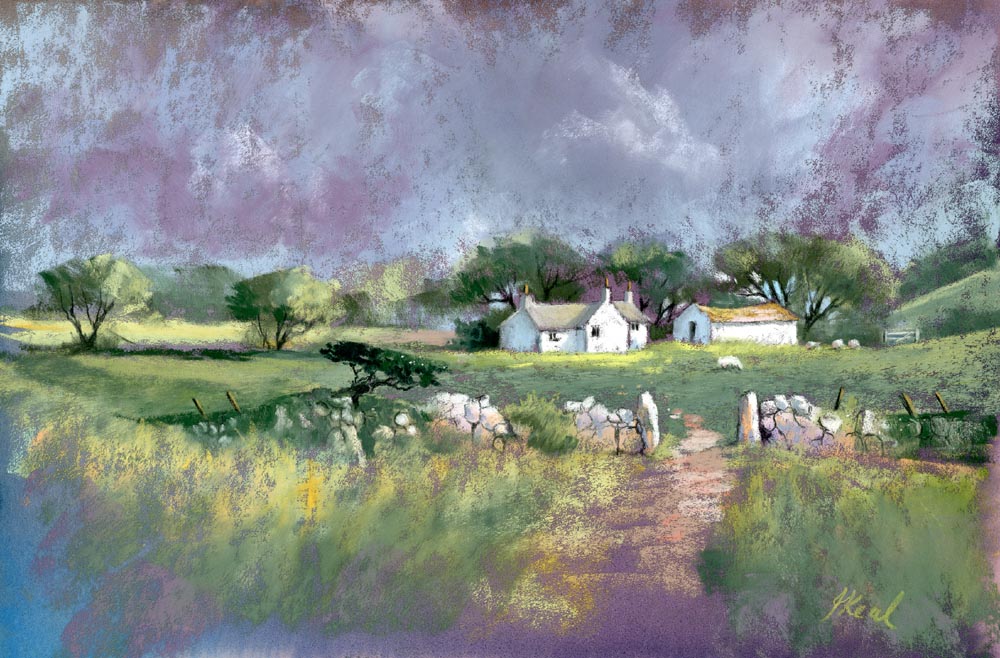It is a sad fact that in many paintings skies are painted without much forethought, when in fact they should be considered as an intrinsic part of the composition. They not only set the mood and lighting effects, but clouds, sun, squalls, lightning and stormy effects can all be positioned and treated sympathetically in relation to the ground features, especially mountains, hills and trees with which the sky comes into contact.
In this watercolour from my new book David Bellamy’s Arctic Light I have placed the most interesting part of the sky close to the summit of the Geologryggen peak and directly above the polar bear, thus bringing all the main elements together. For this painting, done on Saunders Waterford rough high white paper I began by wetting the whole sky area then working in quinacridone gold around the brightest point, and immediately blending in permanent orange to warm it up even more. I had already mixed up a wash of Moonglow with French ultramarine and applied this to the rest of the sky. While this was all still wet I brought in some much stronger Moonglow to apply the darker clouds wet-into-wet. Note the counterchange where mountain meets sky – the right-hand side shows the mountain slope dark against light, as is the rocky summit, but the rest reveals a sky darker than the snowy ridges. The paints I used here are the Daniel Smith watercolour range which have some amazingly gorgeous colours.
So, when you are doing those thumbnail sketches to work out your composition, don’t forget to include the sky, unless it covers a small part of the work. For those who enjoy painting skies and really want some good examples the Arctic book is a real treasury as it is crammed with a whole variety of skies suitable whether you are painting in Bognor, Bornholm or wherever. For further details see my website.
I will be signing my book at Stanfords map shop in Covent Garden on July 10th, so if you would like to come along and have a chat or ask any questions, then please get in touch with Mary Ellingham at Search Press on marye@searchpress.com or telephone 01892 510 850




